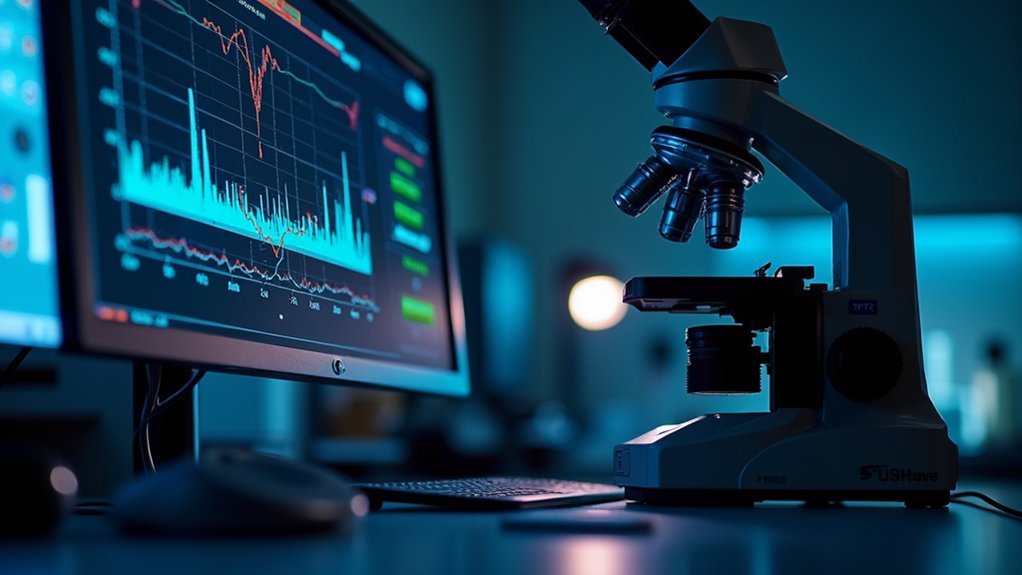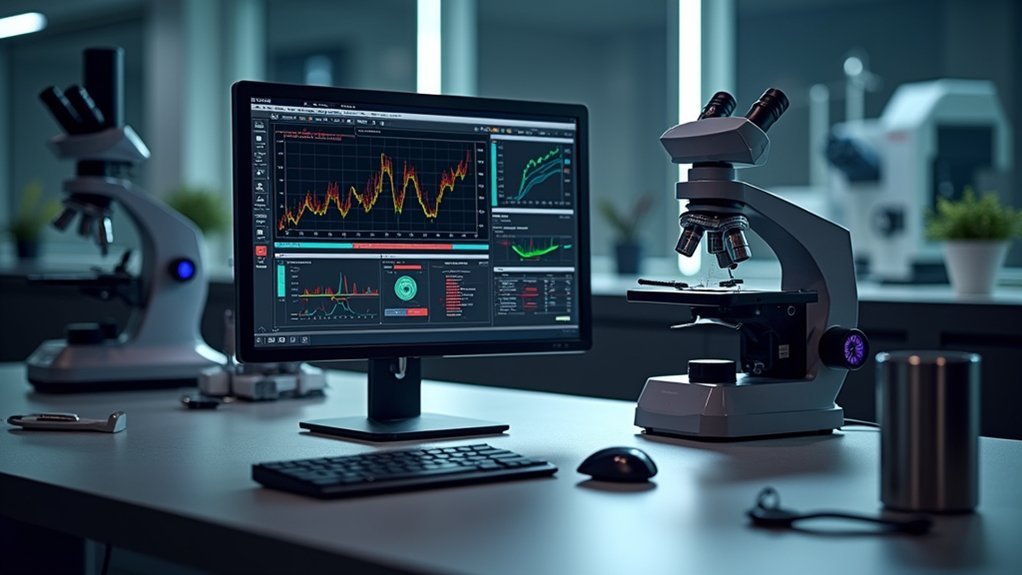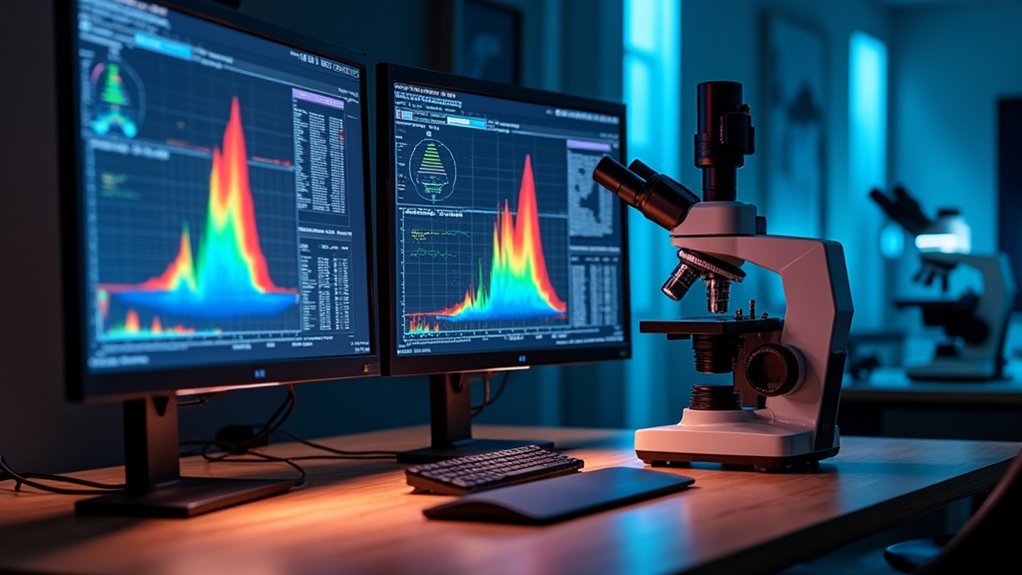The top microscope calibration software tools include ZEISS Labscope with its extensive toolkit and saved calibration settings, ZEN Microscopy Software featuring Smart Setup and GPU-powered visualization, and Leica LAS X offering auto/manual exposure adjustments with advanced measurement capabilities. You’ll find ZEISS ideal for routine analysis, ZEN perfect for sophisticated multi-modal systems, and Leica LAS X excelling in both life science and industrial applications. Our detailed comparison reveals how each platform guarantees measurement consistency and reproducibility.
ZEISS Labscope: Comprehensive Calibration Features for Research Microscopes

When researchers demand precision in microscopic measurements, ZEISS Labscope rises to the challenge with its thorough calibration toolkit. This versatile software enables you to overlay reticle formats during your observations, ensuring exceptional measurement accuracy essential for research environments.
You’ll appreciate how easily you can annotate images with scale bars, providing instant visual references for size determination. The calibration settings you establish can be saved and applied across different imaging sessions, promoting consistency and reproducibility in your research.
ZEISS Labscope truly shines during live imaging, where you can apply calibrated settings in real-time without compromising image quality. Supporting various calibration formats, the software adapts to diverse microscopy applications, making it an indispensable tool whether you’re conducting routine analysis or pioneering research.
ZEN Microscopy Software: Advanced Calibration Tools for Multi-Modal Systems
Designed for sophisticated multi-modal imaging systems, ZEN Microscopy Software takes calibration capabilities to unprecedented levels with its Smart Setup feature.
You’ll experience consistent digital microscope calibration across experiments, regardless of microscope type. The intelligent control system streamlines hardware calibration through a unified interface, ensuring reliable data acquisition every time.
- Access over 180 image processing tools that optimize imaging parameters for high-quality results
- Utilize batch processing to efficiently calibrate multiple images, enhancing reproducibility
- Benefit from GPU-powered 3D rendering that improves visualization during calibration
- Navigate a thorough system that maintains calibration integrity across all multi-modal systems
ZEN’s advanced calibration tools eliminate guesswork from your microscopy workflow, letting you focus on research rather than technical adjustments.
Leica LAS X: Precision Calibration Solutions for Life Science and Industrial Applications

A powerhouse in microscopy calibration, Leica LAS X software delivers extensive solutions that seamlessly bridge life science and industrial applications.
You’ll benefit from integrated configuration and control features that guarantee your microscope and digital cameras maintain precise calibration for ideal imaging conditions.
When capturing images, you can leverage both auto and manual exposure adjustments to enhance accuracy and reliability during calibration processes.
The convenient thumbnail gallery lets you quickly review acquired images to identify necessary calibration adjustments.
LAS X’s advanced measurement tools automatically calibrate images with scale bars, guaranteeing accurate size representation in all your microscopy tasks.
For materials science work, you’ll appreciate the tailored automated analyses that deliver consistent measurement accuracy across structural studies.
Frequently Asked Questions
What Equipment Is Used to Calibrate a Microscope?
You’ll need standard calibration slides, stage micrometers, digital calipers, and optical interferometers to calibrate your microscope properly. Software tools can also help you set up measurement parameters and validate your calibration results.
What Is Microscope Software?
Microscope software allows you to control your microscope digitally. It’s designed to help you capture, process, and analyze images while providing tools for measurement, calibration, and automated workflows during your microscopic observations.
How Do You Calibrate a Microscope?
You’ll need to align optics using a calibration slide with known dimensions. Adjust focus, center the stage, and verify objective lenses. Remember to recalibrate after changing objectives or moving your microscope for consistent results.
How Often Should a Microscope Be Calibrated?
You should calibrate your microscope before each use or at least weekly for high-precision work. Don’t forget to recalibrate after environmental changes, switching objectives, or adding new equipment to maintain reliable results.
In Summary
You’ve now explored three powerful microscope calibration options: ZEISS Labscope for research-focused calibration, ZEN for multi-modal calibration capabilities, and Leica LAS X for specialized life science and industrial precision. Each offers unique strengths depending on your specific application needs. When choosing your calibration software, consider your workflow requirements, microscope compatibility, and whether you’ll need advanced features for specialized imaging tasks.





Leave a Reply